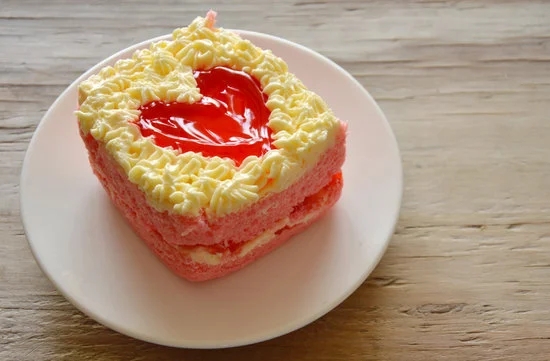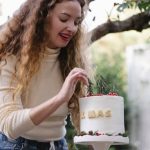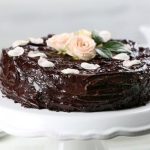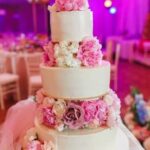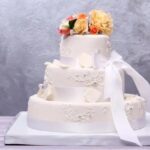Buttercream frosting is a versatile and essential component in cake decorating, adding both flavor and visual appeal to any baked creation. Whether you’re a beginner or a seasoned baker, mastering the art of buttercream frosting is crucial for creating beautifully decorated cakes that taste as good as they look. In this article, we will delve into the world of buttercream frosting recipes for cake decorating, starting with the basics and gradually moving on to more advanced techniques.
Understanding the key ingredients needed to make a delicious buttercream frosting is essential for success. From butter to powdered sugar and vanilla extract, each component plays a crucial role in achieving the perfect texture and flavor. By following our detailed list of ingredients, you’ll be well-equipped to whip up a batch of buttercream frosting that will impress even the most discerning dessert enthusiasts.
With our step-by-step instructions, you’ll be able to create smooth and creamy buttercream frosting from scratch in no time. We will guide you through each stage of the process, ensuring that your frosting turns out just right every time. Whether you’re looking to frost a simple layer cake or decorate an elaborate celebration cake, our comprehensive guide will provide you with all the knowledge and skills necessary to achieve professional-quality results.
Ingredients Needed for Buttercream Frosting Recipe
Buttercream frosting is a versatile and delicious addition to any cake decorating project. To make the perfect buttercream frosting, you will need a few key ingredients that come together to create a smooth and creamy topping for your cakes. Here is a detailed list of all the necessary ingredients you will need:
- Butter: Unsalted butter at room temperature is essential for a rich and creamy texture.
- Powdered sugar: Also known as confectioners’ sugar, it adds sweetness and helps thicken the frosting.
- Vanilla extract: Provides a subtle yet essential flavor to complement the sweetness.
- Heavy cream or milk: Helps to adjust the consistency of the frosting to achieve the desired texture.
Creating a delicious buttercream frosting recipe for cake decorating requires precise measurements and high-quality ingredients. By following these steps, you can ensure that your buttercream frosting turns out perfectly every time.
- Start by creaming the softened butter in a mixing bowl until smooth.
- Gradually add in the powdered sugar, beating well after each addition until fully incorporated.
- Mix in the vanilla extract and then slowly add in the heavy cream or milk until you reach your desired consistency.
With these simple ingredients on hand and following these step-by-step instructions, you can create a delectable buttercream frosting recipe for cake decorating that will elevate the look and taste of your creations.
Step-by-Step Instructions
To create a delicious buttercream frosting for your cake decorating needs, follow these simple step-by-step instructions. Making your own buttercream allows you to customize the flavor and consistency, ensuring a truly unique and tasty creation. Let’s dive into how to make this versatile frosting from scratch.
Gather Your Ingredients
Before you begin making your buttercream frosting, gather all the necessary ingredients. You will need unsalted butter, confectioners’ sugar (also known as powdered sugar), vanilla extract, and a pinch of salt. These basic ingredients form the base of the frosting and can be adjusted based on your personal preferences. Make sure the butter is at room temperature to ensure a smooth and creamy texture.
Creaming the Butter
Start by creaming the room temperature butter in a mixing bowl using an electric mixer on medium speed. Creaming the butter incorporates air into it, resulting in a lighter and fluffier frosting. Once the butter is smooth, gradually add in the confectioners’ sugar, a little at a time, while continuing to mix on low speed. This gradual addition helps prevent lumps in the frosting.
Adding Flavor and Consistency
After incorporating all of the confectioners’ sugar into the creamy butter mixture, add in vanilla extract for flavor. You can also adjust the consistency of the frosting by adding more confectioners’ sugar for a stiffer texture or some milk or cream for a smoother consistency. Keep mixing until all ingredients are well combined and you achieve your desired texture. Your homemade buttercream frosting is now ready to be used for decorating cakes with flair and creativity.
Tips for Achieving the Perfect Consistency
When it comes to decorating cakes with buttercream frosting, achieving the perfect consistency is key. The texture of the frosting can greatly impact the way you are able to work with it and create beautiful designs on your cake. Here are some tips on how to adjust the texture of your buttercream frosting to suit different decorating techniques:
- Thick vs. Thin: Depending on the technique you are using, you may need your buttercream frosting to be either thick or thin. For intricate piping work or creating detailed designs, a thicker consistency is ideal as it holds its shape well. On the other hand, if you are looking for a smoother finish for covering a cake, a thinner consistency will make spreading easier.
- Adding Liquid: To thin out your buttercream frosting, you can add small amounts of liquid at a time until you reach the desired consistency. Milk, cream, or even fruit juice can be used to achieve a smoother texture without compromising the flavor.
- Adjusting Sugar and Butter: If your frosting is too thin, adding more powdered sugar can help stiffen it up. On the contrary, if your frosting is too thick, adding more softened butter at room temperature can help soften it and make it easier to work with.
By experimenting with these adjustments and finding the right balance between thickness and smoothness, you’ll be able to customize your buttercream frosting for any decorating technique you choose to use. Remember that practice makes perfect – don’t be afraid to try different methods until you find what works best for your unique cake decorating style and preferences.
Flavor Variations
Buttercream frosting is a versatile and delicious addition to any cake decorating project. By incorporating different flavors into your buttercream frosting recipe, you can elevate the taste of your cakes and create unique culinary experiences for your guests. Vanilla, chocolate, and citrus are just a few examples of flavor variations that can take your buttercream frosting to the next level.
For a classic vanilla buttercream frosting, all you need is some high-quality vanilla extract or vanilla bean paste. Adding this aromatic ingredient to your frosting will impart a rich and sweet flavor that pairs well with a wide variety of cake flavors. Whether you’re making a simple birthday cake or an elaborate wedding cake, vanilla buttercream is always a crowd-pleaser.
If you’re looking to add a decadent touch to your cakes, consider experimenting with chocolate buttercream frosting. By incorporating cocoa powder or melted chocolate into your base recipe, you can create a luscious and indulgent frosting that complements chocolate cakes, red velvet cakes, or even vanilla cakes for a delightful contrast in flavors. The richness of the chocolate will surely satisfy any chocoholic’s cravings.
For those who prefer more refreshing and tangy flavors, citrus-infused buttercream frosting is the way to go. By adding fresh lemon zest or orange extract to your buttercream base, you can achieve a bright and zesty flavor profile that cuts through the sweetness of the frosting. Citrus buttercream is perfect for light and summery cakes, offering a burst of freshness with every bite.
| Flavor Variation | Description |
|---|---|
| Vanilla | Aromatic ingredient that imparts rich and sweet flavor to buttercream frosting |
| Chocolate | Cocoa powder or melted chocolate creates a luscious and indulgent frosting |
| Citrus | Fresh lemon zest or orange extract adds bright and zesty flavor to buttercream frosting |
Colorful Buttercream
Natural Ingredients for Coloring
One of the best ways to add color to your buttercream frosting is by using natural ingredients. For instance, you can create a lovely pink hue with beet juice, a vibrant green with spinach powder, or a rich yellow with turmeric. These natural options not only provide beautiful colors but also add a hint of flavor to your frosting.
Food Coloring
If you prefer using food coloring, there are many options available in liquid, gel, or powder form. Gel-based food colors are highly concentrated and work well for achieving intense shades without altering the consistency of the buttercream. Powdered food coloring is great for creating pastel tones and is often preferred by professional bakers for intricate designs.
Blending Techniques
When incorporating color into your buttercream frosting, it’s essential to mix it evenly to avoid streaks or uneven patches. Start by adding a small amount of color at a time and gradually increase until you achieve the desired shade. Blend the frosting thoroughly using a stand mixer or hand whisk until the color is uniform throughout. Remember that colors may deepen over time as the frosting rests, so consider letting it sit before making any adjustments.
Decorating Techniques
Buttercream frosting is not only delicious but also versatile when it comes to cake decorating. One of the most popular and fundamental decorating techniques is piping. Piping involves using a pastry bag and various tips to create intricate designs on cakes.
Whether you’re creating swirls, rosettes, or writing messages, mastering piping with buttercream frosting can elevate your cake decorating game. To achieve the best results, it’s essential to practice your piping skills on parchment paper before moving on to the actual cake.
In addition to piping, frosting borders are another fantastic way to decorate cakes with buttercream frosting. Borders help frame the cake and give it a polished look. From simple dots and shells to more elaborate ruffles and braided borders, there are countless border designs you can create with buttercream frosting. Experimenting with different border styles can add depth and dimension to your cakes while showcasing your creativity.
Lastly, creating designs with buttercream frosting allows you to personalize cakes for any occasion. Whether you’re crafting flowers, leaves, or geometric patterns, the possibilities are endless when it comes to design elements.
With the right tools and a good understanding of how buttercream behaves, you can turn a plain cake into a work of art. Remember that practice makes perfect when it comes to cake decorating, so don’t be afraid to try new techniques and unleash your artistic flair.
| Decorating Technique | Description |
|---|---|
| Piping | Using a pastry bag and tips to create designs like swirls and rosettes |
| Frosting Borders | Adding decorative borders like dots or ruffles around the edges of cakes |
| Creating Designs | Fashioning intricate patterns such as flowers or geometric shapes on cakes |
Best Practices for Storing and Using Buttercream
In conclusion, mastering the art of buttercream frosting is essential for any aspiring cake decorator. With the right ingredients, step-by-step instructions, and tips for achieving the perfect consistency, creating a smooth and delicious buttercream frosting can elevate your cakes to a whole new level. Experimenting with different flavor variations such as vanilla, chocolate, or citrus can add an extra dimension to your creations, while colorful buttercream opens up endless possibilities for vibrant and eye-catching designs.
When it comes to decorating techniques, knowing how to use buttercream frosting is key. From piping intricate patterns to creating frosting borders and unique designs, the possibilities are truly endless. By following best practices for storing leftover frosting for future use and learning how to properly apply it to cakes for a professional finish, you can ensure that your creations not only look stunning but taste amazing as well.
Whether you are a novice in cake decorating or a seasoned pro, having a go-to buttercream frosting recipe in your arsenal is a game-changer. With patience, practice, and a touch of creativity, you can turn any simple cake into a work of art that will impress friends and family alike. So don’t be afraid to experiment with different flavors, colors, and decorating techniques – the world of buttercream frosting is yours to explore.
Frequently Asked Questions
Which Buttercream Is Best for Cake Decorating?
The best buttercream for cake decorating is typically Swiss meringue buttercream. This type of buttercream is smooth, creamy, and holds its shape well when piping onto cakes. It also has a stable texture that makes it ideal for intricate designs and decorations.
What Kind of Buttercream Do Professionals Use?
Professionals often use Italian meringue buttercream for their cake decorating needs. This type of buttercream is silky smooth, less sweet than American buttercream, and has a more stable consistency that holds up well in various environmental conditions. It is favored by many professionals for its versatility and luxurious taste.
How Do You Make Buttercream Thicker for Piping?
To make buttercream thicker for piping, you can adjust the consistency by adding more powdered sugar or chilling it in the refrigerator to firm up before piping. Adding small amounts of cornstarch or meringue powder can also help thicken the buttercream without compromising its flavor or texture.
Experimenting with different techniques can help you achieve the desired thickness for your piping needs.

Welcome to our cake decorating blog! My name is Destiny Flores, and I am the proud owner of a cake decorating business named Cake Karma. Our mission is to provide delicious, beautiful cakes for all occasions. We specialize in creating custom cakes that are tailored specifically to each customer’s individual needs and tastes.

